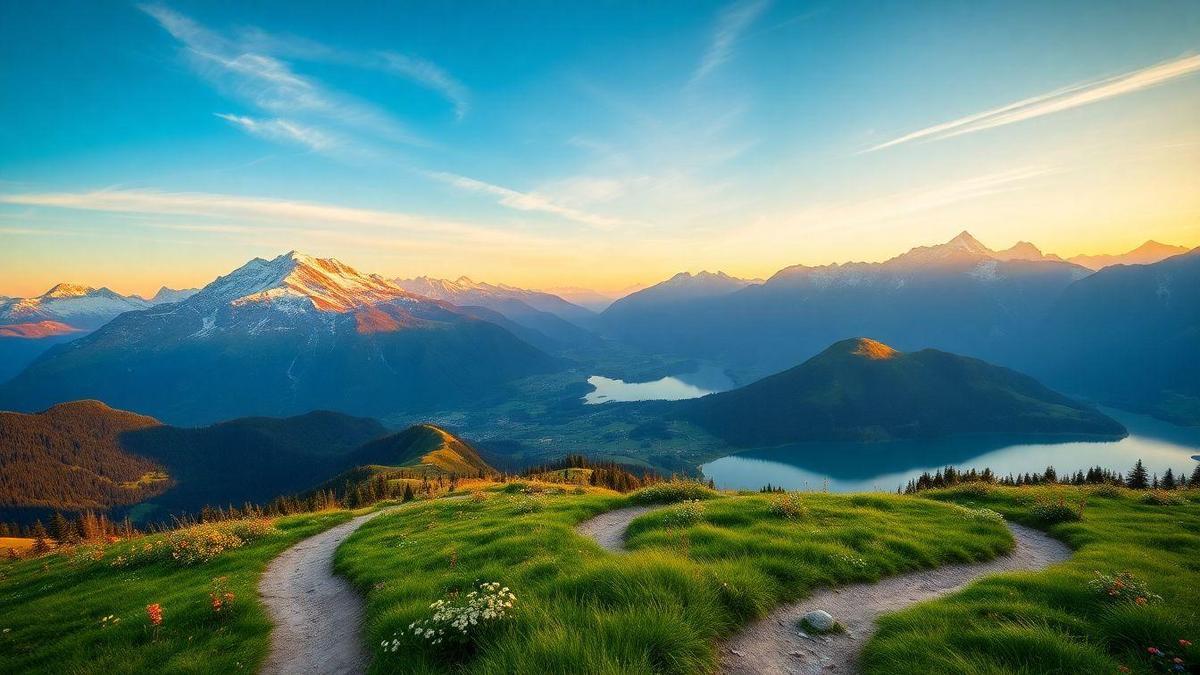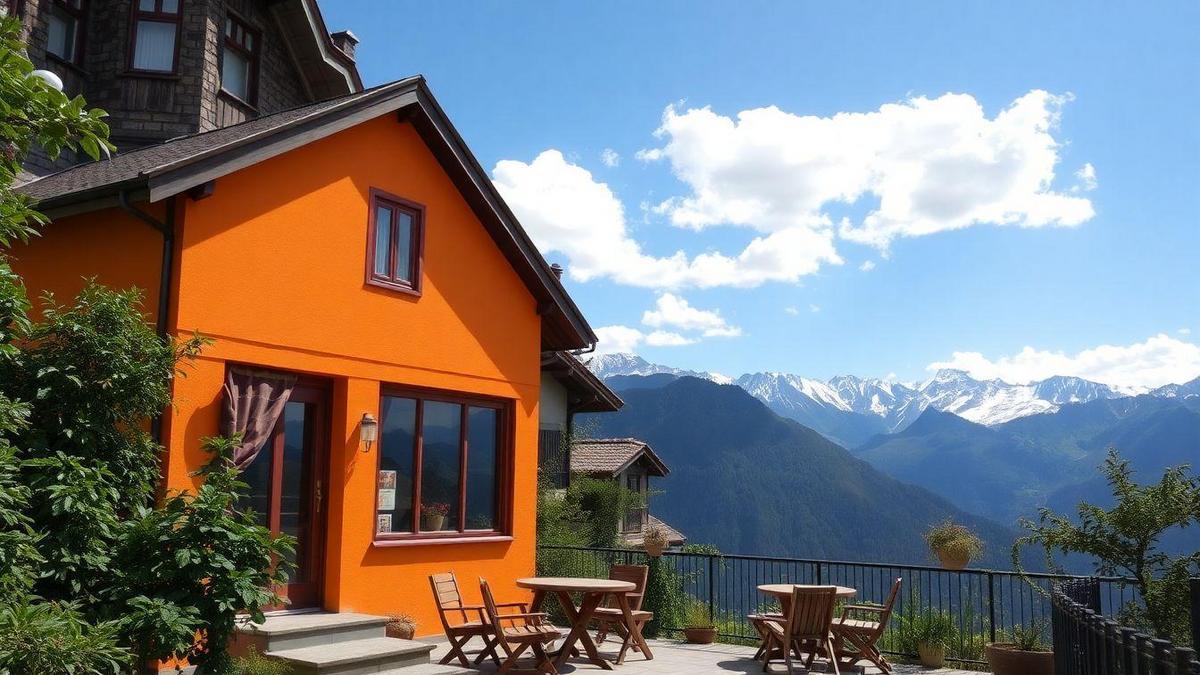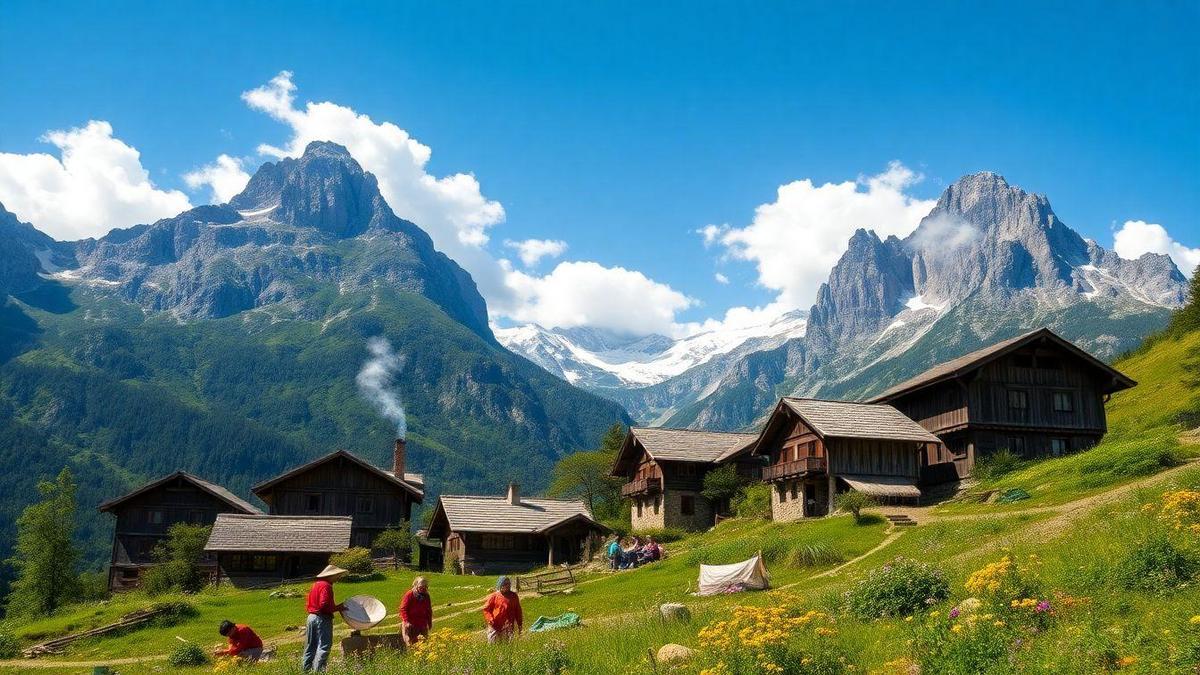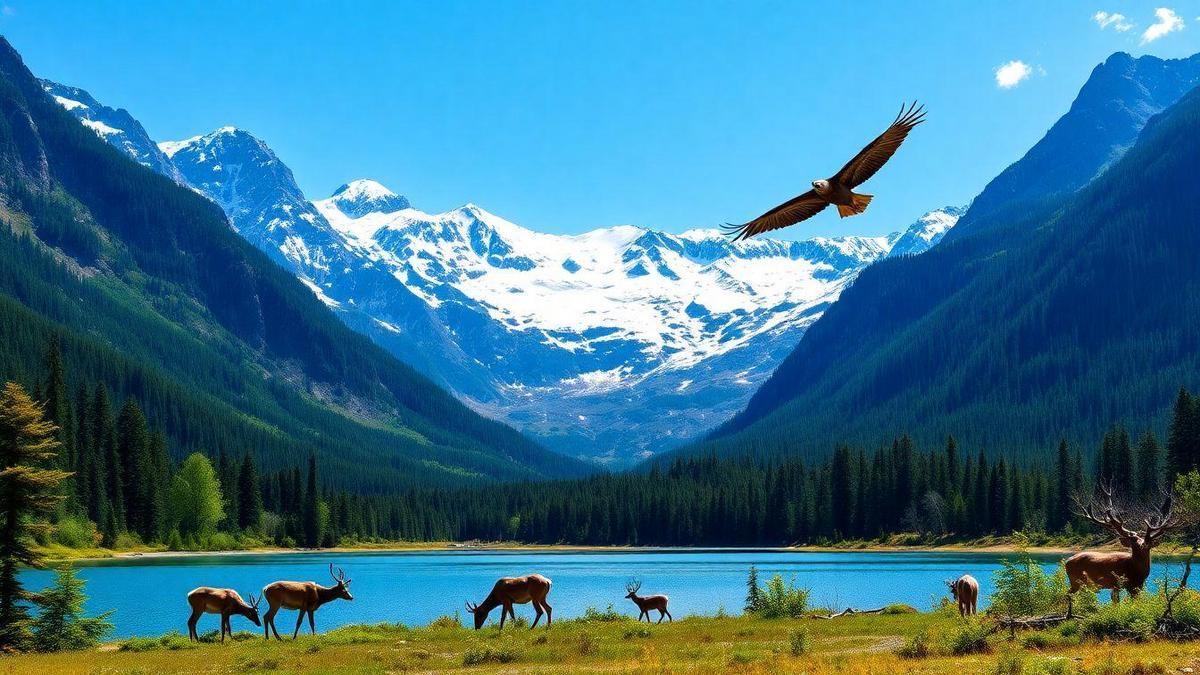
Discovering the Best Photography Spots in the Incredible Alps
Top Locations for Stunning Views in the Alps
When you think of the Alps, what comes to mind? Majestic peaks, lush valleys, and breathtaking landscapes. If you’re a photography enthusiast, you’re in for a treat! Here are some of the best locations to capture stunning views:
- Lake Geneva: The shimmering waters against the towering mountains create a picture-perfect scene. For more scenic spots, check out some of the top scenic views in the Alps.
- Zermatt: Home to the iconic Matterhorn, this village offers stunning angles for any photographer. Explore iconic mountain peaks that provide breathtaking backdrops.
- Interlaken: Nestled between two lakes, it’s a paradise for capturing reflections and mountain backdrops.
Famous Peaks for Landscape Photography
The Alps are dotted with famous peaks that are a photographer’s dream. Here are a few you shouldn’t miss:
| Peak Name | Height (meters) | Best Time for Photography |
|---|---|---|
| Mont Blanc | 4,808 | Early morning or sunset |
| Eiger | 3,967 | Late spring to summer |
| Jungfrau | 4,158 | Autumn for colorful foliage |
Each of these peaks offers a unique opportunity for capturing the beauty of the Alps.
Why These Spots Are Perfect for Landscape Artists
These locations are ideal for landscape artists because they offer diverse scenery and lighting conditions. Early morning light can create a magical glow, while sunsets paint the sky with vibrant colors.
Imagine standing at the edge of Lake Geneva, the sun rising over the mountains, casting reflections on the water. Or picture yourself on a trail in Zermatt, with the Matterhorn towering above you, its majestic presence inspiring your creativity.
These moments are fleeting, but with your camera in hand, you can capture them forever. The best photography spots in the incredible Alps for landscape artists invite you to explore, connect, and create stunning images that tell a story.
Hidden Gems for Outdoor Photography in the Alps
Lesser-Known Locations to Capture Nature
When exploring the Alps, you might think of the famous peaks and bustling tourist spots. But there are hidden gems waiting for you! Places like Lauterbrunnen Valley and Obersee are often overlooked. These spots offer breathtaking views without the crowds.
- Lauterbrunnen Valley: Known for its stunning waterfalls, it’s a paradise for photographers. Discover more about hidden waterfall hikes that can enhance your photography experience.
- Obersee: This serene lake reflects the mountains beautifully, especially at sunrise.
Unique Features of Hidden Photography Spots
Each hidden location in the Alps has its own charm. Here are some features that make these spots special:
| Location | Unique Feature |
|---|---|
| Lauterbrunnen | 72 waterfalls cascading down cliffs |
| Obersee | Crystal-clear waters with reflections |
| Arolla | Wildflower meadows in summer |
| Tannheimer Tal | Breathtaking mountain views |
These features create perfect settings for capturing nature in all its glory.
How to Find These Secret Locations in the Alps
Finding these lesser-known spots can feel like a treasure hunt. Here are some tips to help you discover them:
- Local Guides: Chat with locals or hire a guide. They often know the best-kept secrets.
- Online Forums: Join photography forums or social media groups. Other photographers love sharing their finds.
- Hiking Trails: Explore off-the-beaten-path hiking trails. Many hidden spots are just a short walk away from popular routes. For more hiking options, check out the best hiking trails.
With a little effort, you can uncover stunning views that will make your photography shine.
Essential Photography Tips for the Alps
Best Times of Day for Capturing Alpine Beauty
When you’re out capturing the Alps, timing is everything! The golden hours—just after sunrise and just before sunset—are your best bets. The soft, warm light during these times paints the mountains in stunning colors. You’ll want to wake up early or stay out late to catch that magical glow.
- Morning Light: The sunrise can create a beautiful contrast against the snow-capped peaks.
- Evening Light: The sunset often bathes the valleys in rich hues, making for breathtaking shots.
Equipment You Need for Landscape Photography
Packing the right gear can make a world of difference in your photography adventure. Here’s a handy list to keep you on track:
| Equipment | Purpose |
|---|---|
| Camera | Capture high-quality images |
| Tripod | Stabilize your shots for clarity |
| Wide-angle lens | Capture vast landscapes |
| Filters | Enhance colors and reduce glare |
| Extra batteries | Keep your camera powered up |
Having the right tools can help you capture the stunning beauty of the Alps in all its glory.
How to Prepare for Your Photography Adventure
Preparation is key! Here are some tips to help you get ready for your photography journey:
- Research Locations: Know where the best photography spots in the incredible Alps for landscape artists are. Look for hidden gems as well as popular sites.
- Check the Weather: Weather can change quickly in the mountains. Dress in layers and be ready for anything.
- Practice Your Skills: Before you go, practice your photography skills. Experiment with different settings and compositions.
With a little planning, you’ll be all set to capture the breathtaking beauty of the Alps.
Scenic Locations That Will Inspire Landscape Artists
Iconic Landscapes Every Artist Should Visit
The Alps are a treasure trove of stunning views that every artist dreams of capturing. From the towering peaks to serene valleys, there’s something for everyone. Here are some must-visit spots:
- Zermatt and the Matterhorn: This iconic mountain is a favorite for many. Its sharp, pyramid shape stands tall against the sky, making it a perfect subject for your canvas.
- Lake Geneva: The calm waters reflect the surrounding mountains beautifully. It’s a peaceful spot that inspires creativity. For more picturesque locations, consider the most picturesque peaks for outdoor adventures.
- The Dolomites: With their jagged peaks and colorful rock formations, these mountains offer a dramatic backdrop that can ignite your imagination.
The Role of Light in Alpine Photography
Light plays a crucial part in how we see and capture the Alps. The golden hour, just after sunrise or before sunset, brings a warm glow to the landscape. This soft light makes the mountains and valleys look magical.
- Morning Light: It can create stunning shadows and highlights on the peaks.
- Evening Light: The sunset can paint the sky in vibrant colors, perfect for dramatic shots.
Tips for Capturing the Perfect Shot in the Alps
Capturing the beauty of the Alps takes a bit of planning and patience. Here are some simple tips to help you get those breathtaking shots:
- Choose the Right Time: Visit during early morning or late afternoon for the best light.
- Use a Tripod: This helps keep your camera steady, especially in low light.
- Experiment with Angles: Don’t be afraid to get low or find a high viewpoint. Different perspectives can reveal hidden beauty.
- Bring Extra Batteries: Cold weather can drain batteries quickly, so it’s smart to have backups.
| Tip | Description |
|---|---|
| Timing | Capture during golden hours for the best light. |
| Equipment | A tripod helps with stability in low light. |
| Angles | Explore different viewpoints for unique shots. |
| Batteries | Keep extras on hand for cold weather. |
The Impact of Weather on Photography in the Alps
How Different Seasons Affect Your Shots
When you’re out capturing the incredible Alps, the season can change everything. In winter, you’ll find snow-capped peaks that look like they belong in a fairy tale. The crisp air makes colors pop, and the low sun creates long shadows, adding drama to your photos.
In spring, the melting snow reveals vibrant greens and blooming flowers. This season is perfect for capturing contrast between the white snow and the fresh colors of nature.
Summer brings clear skies and lush landscapes. You can take stunning shots of waterfalls and vibrant meadows. The warm light adds a golden glow to your images.
Autumn is a painter’s dream. The trees turn shades of orange, red, and yellow, creating a breathtaking backdrop. The mix of colors can turn a simple landscape into a masterpiece.
Dealing with Changing Weather Conditions
Weather can change faster than you can say “cheese!” One moment, you’re basking in the sun, and the next, dark clouds roll in. It’s important to be ready for anything.
Here are some tips to help you adapt:
- Check the Forecast: Always keep an eye on the weather report before heading out.
- Be Flexible: If the weather changes, be ready to adjust your plans. Sometimes, the best shots come when you least expect them.
- Use Different Settings: If it’s cloudy, try shooting in black and white or adjust your settings to capture the mood.
Preparing for Weather Challenges While Shooting
Being prepared can make all the difference. Here’s how to tackle weather challenges while shooting:
| Tip | Description |
|---|---|
| Dress in Layers | Wear layers to stay warm and comfortable. |
| Bring a Rain Cover | Protect your camera from unexpected rain. |
| Pack Extra Batteries | Cold weather drains batteries faster, so bring spares. |
| Use a Tripod | A sturdy tripod helps stabilize your shots in windy conditions. |
By being ready for the weather, you can focus on capturing the best photography spots in the incredible Alps for landscape artists.
The Best Photography Spots in the Incredible Alps for Landscape Artists
Must-Visit Areas for Nature Photography
The Alps are a photographer’s dream. If you’re looking for breathtaking views, you can’t miss these spots:
- Zermatt: Home to the iconic Matterhorn, this area offers stunning vistas. Capture the mountain’s reflection in the nearby lakes.
- Lake Geneva: The sparkling waters and surrounding mountains create a perfect backdrop. The sunsets here are simply magical.
- Jungfrau Region: With its towering peaks and lush valleys, this region is a paradise for landscape photography. The contrast of snow and greenery is striking. For more stunning views, consider the best times for mountain photography.
- Dolomites: Known for their jagged peaks, the Dolomites offer unique rock formations. The light during sunrise and sunset is especially beautiful.
Balancing Composition and Landscape in Your Shots
When photographing the Alps, balance is key. Here are some tips to help you find that perfect shot:
- Rule of Thirds: Imagine your photo divided into three sections. Place your main subject along these lines to create a more engaging image.
- Leading Lines: Use natural lines, like rivers or paths, to guide the viewer’s eye through your photo. For more ideas on scenic locations, explore scenic mountain locations.
- Foreground Interest: Include elements in the foreground, like flowers or rocks, to add depth to your landscape.
Creating Stunning Images in the Alpine Environment
The Alpine environment can be challenging, but it offers incredible opportunities for stunning images. Here’s how to make the most of it:
- Lighting: Early mornings and late afternoons provide the best light. The golden hour casts a warm glow on the mountains.
- Weather: Don’t shy away from cloudy days. They can add drama to your photos. Mist and fog create a mystical atmosphere.
- Equipment: A sturdy tripod is essential for capturing sharp images, especially in low light. A polarizing filter can help enhance colors and reduce glare.
| Photography Tip | Description |
|---|---|
| Use a Tripod | Keeps your camera steady for sharp images. |
| Shoot in RAW | Allows for more editing flexibility later. |
| Explore Different Angles | Find unique perspectives for your shots. |
Frequently asked questions
What are the best photography spots in the Incredible Alps for landscape artists?
You should visit locations like Lake Geneva, Zermatt, and the Dolomites. Each spot offers stunning views!
When is the best time to photograph the Alps?
Early morning or late afternoon is ideal. The light is soft, and colors pop!
Do I need special gear for photography in the Alps?
A good camera and durable lens are essential. Don’t forget a sturdy tripod for stability!
Are there guided tours for landscape photography in the Alps?
Yes, you can find many guided tours. They help you discover hidden gems!
How can I prepare for weather changes while photographing?
Dress in layers and check the forecast. The weather can change quickly in the Alps!


